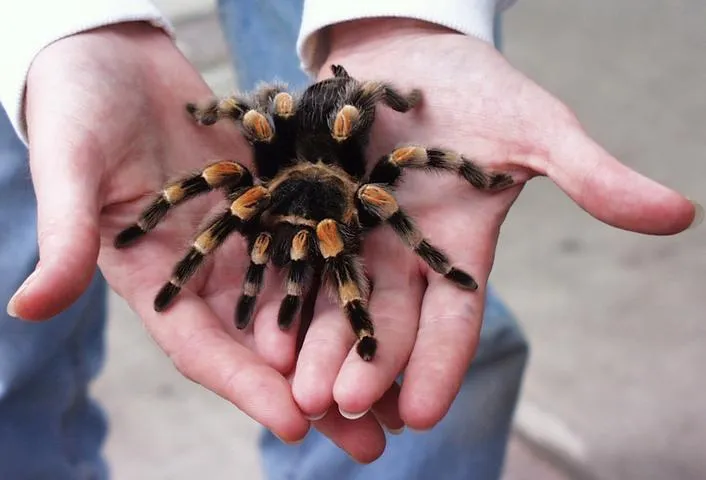Red Knee Tarantula Care Essentials
The Mexican Red Knee Tarantula (Brachypelma hamorii) is a popular pet due to its docile nature, striking appearance, and relatively easy care requirements. However, proper care is crucial for the well-being of your tarantula. This comprehensive guide provides all the essential information you need to keep your Red Knee happy and healthy. From habitat setup to feeding and handling, we’ll cover every aspect of Red Knee tarantula care. Understanding the basics ensures your tarantula thrives, allowing you to enjoy the unique experience of owning this fascinating arachnid.
Choosing Your Red Knee Tarantula
Selecting a healthy Red Knee Tarantula is the first step. A sick or stressed tarantula is more difficult to care for and less likely to thrive. Always source your tarantula from a reputable breeder or pet store that specializes in arachnids. This increases the likelihood of obtaining a healthy specimen and getting accurate information. Careful observation during the selection process is important to ensure you choose a specimen that is vigorous and active. Avoid any tarantula that appears lethargic, has a bloated abdomen, or shows signs of injury or parasites.
Where to Buy a Healthy Tarantula
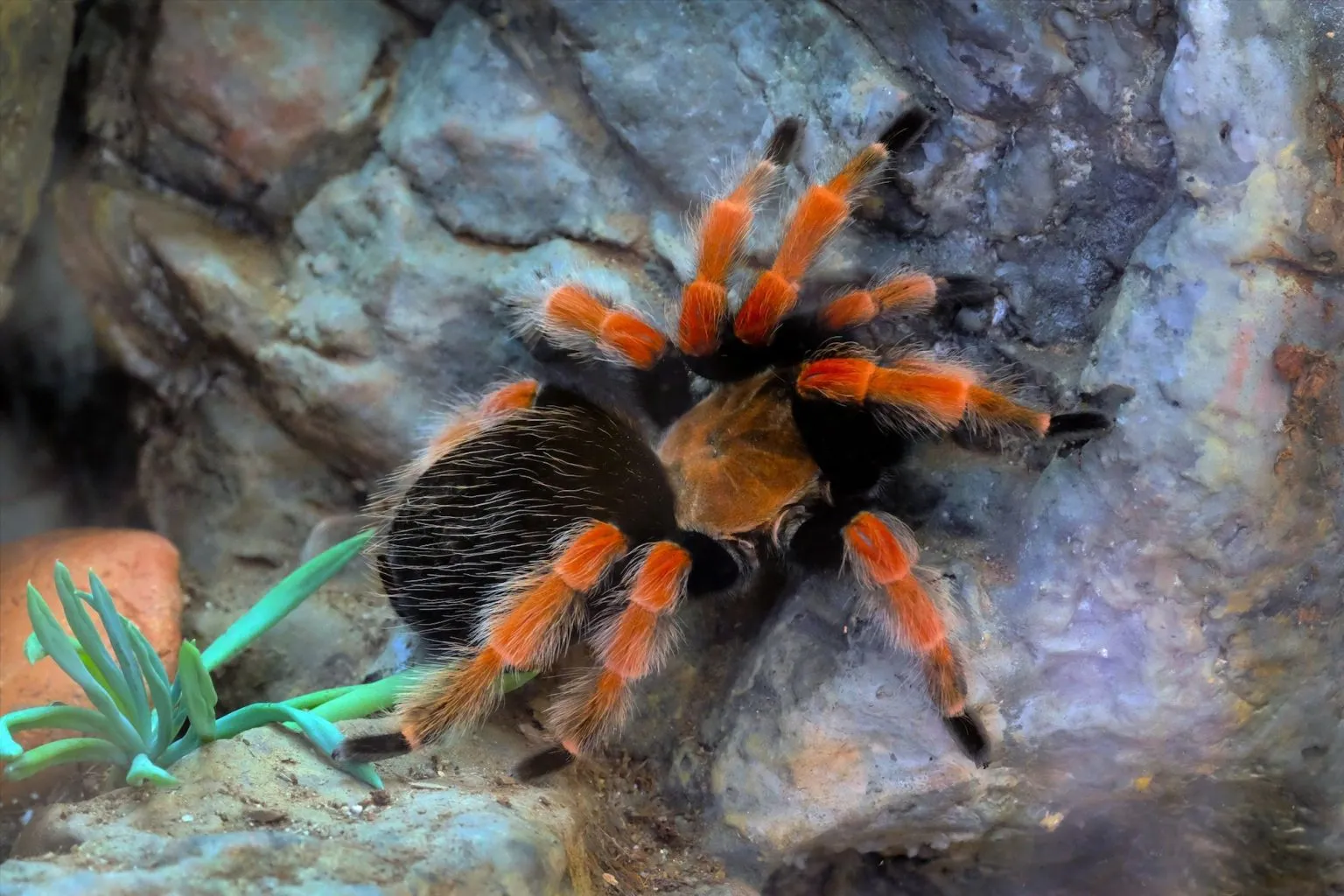
Look for specialty reptile or exotic pet stores or reputable breeders. Avoid purchasing from general pet stores that may not have experience with tarantulas. Online reptile and invertebrate marketplaces can also be good sources, but always research the seller’s reputation. Check for reviews and ensure they guarantee the health of the tarantula. Ensure the seller can provide information on the tarantula’s origin, age, and feeding history.
Identifying a Healthy Tarantula
A healthy Red Knee Tarantula should be alert, with all legs intact. It should have a plump abdomen, indicating it is well-fed. Look for a shiny carapace (the top shell of the cephalothorax). It should not be missing any hairs, which is a sign of stress or possible molting. Avoid tarantulas with mites or other visible parasites. Healthy tarantulas will also often react defensively if you gently blow on them, which is a sign of vitality.
Setting Up the Perfect Habitat
Creating the right environment is key to your Red Knee Tarantula’s well-being. The habitat should mimic its natural environment as closely as possible. This means providing appropriate space, substrate, hiding places, and temperature/humidity levels. A well-designed habitat not only benefits the tarantula’s health but also makes it more enjoyable to observe and care for. A good habitat will reduce stress for your tarantula and encourage natural behaviors, such as burrowing and web-spinning.
The Ideal Enclosure Size
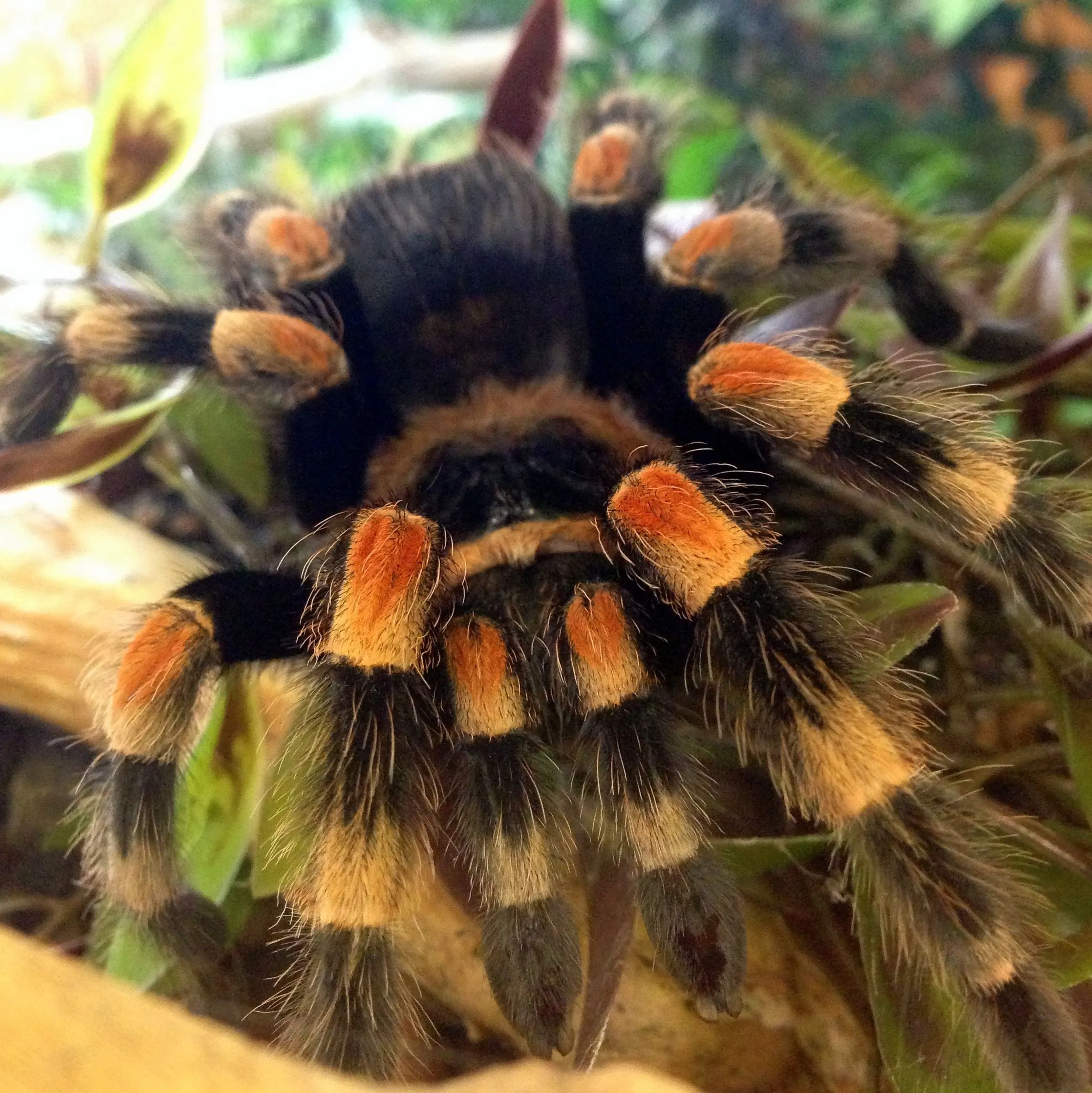
The size of the enclosure depends on the tarantula’s size. A good rule of thumb is to provide a space that is at least three times the tarantula’s leg span in width. A terrestrial species like the Red Knee does not need a tall enclosure. A 5-10 gallon tank is usually sufficient for an adult. Ensure the enclosure has a secure lid to prevent escapes. The enclosure should also have adequate ventilation to prevent the buildup of mold and bacteria.
Substrate Selection & Depth
The substrate is the material that lines the bottom of the enclosure. For Red Knees, a substrate that allows them to burrow is ideal. A mixture of peat moss, coconut fiber, and a bit of vermiculite or sphagnum moss works well. The substrate should be deep enough for the tarantula to burrow – typically 4-6 inches is sufficient. This provides enrichment, and a place to hide. The substrate should also be able to retain moisture, helping to maintain the proper humidity level.
Providing Hiding Spots & Decor
Red Knee Tarantulas are naturally reclusive. Provide several hiding places. Cork bark, hollow logs, or artificial hides are excellent choices. These offer security, allowing the tarantula to feel safe. Decorate the enclosure with artificial plants or other non-toxic items to enrich the environment. Avoid sharp or rough objects that could injure the tarantula during a molt or when moving. Ensure the decor is secure, so it does not fall and injure your tarantula.
Maintaining the Right Temperature & Humidity
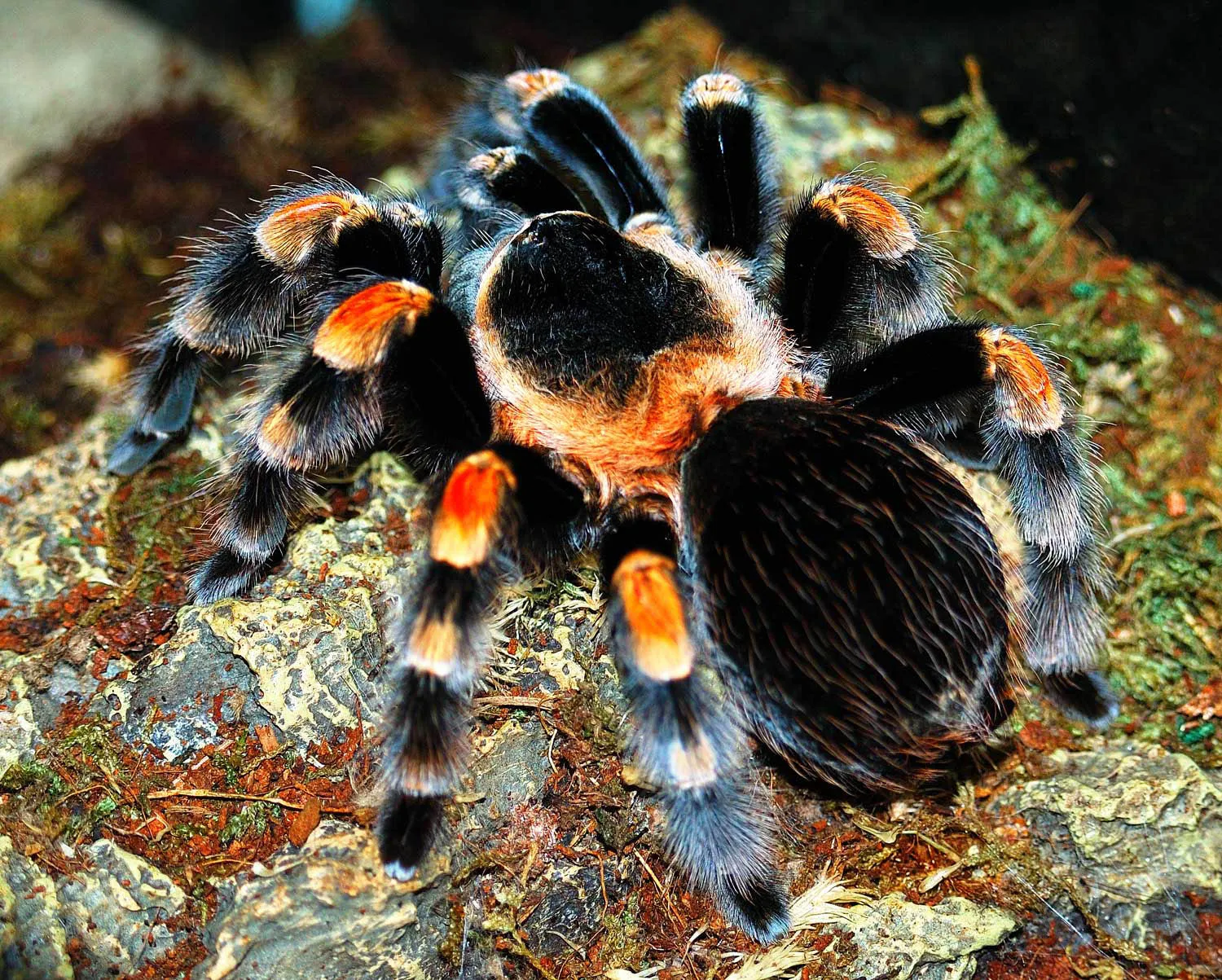
Red Knee Tarantulas thrive in temperatures between 75-85°F (24-29°C). A heat mat placed on the side of the enclosure can provide a gentle heat source. Monitor the temperature using a thermometer. Humidity should be kept at around 60-70%. You can achieve this by misting the enclosure with water every few days, depending on your local climate. The substrate’s moisture also contributes to humidity. Avoid excessive condensation, which can lead to mold.
Feeding Your Red Knee Tarantula
A proper diet is essential for your Red Knee Tarantula’s health and longevity. They are primarily insectivores. The type of food, feeding frequency, and portion sizes will all play a role in your tarantula’s well-being. Always provide fresh water and observe your tarantula’s feeding behavior. Understanding the eating habits of your Red Knee is important for both its nutrition and your ability to detect possible health problems.
What to Feed Your Tarantula
The ideal diet for a Red Knee Tarantula consists mainly of insects. Crickets, mealworms, and roaches are common choices. Variety is beneficial, so offer a mix of these and other insects, such as superworms or waxworms, occasionally. All insects should be gut-loaded with nutritious food for at least 24 hours before feeding them to your tarantula. Avoid feeding wild-caught insects, as they may carry parasites or pesticides.
Feeding Frequency & Portion Sizes
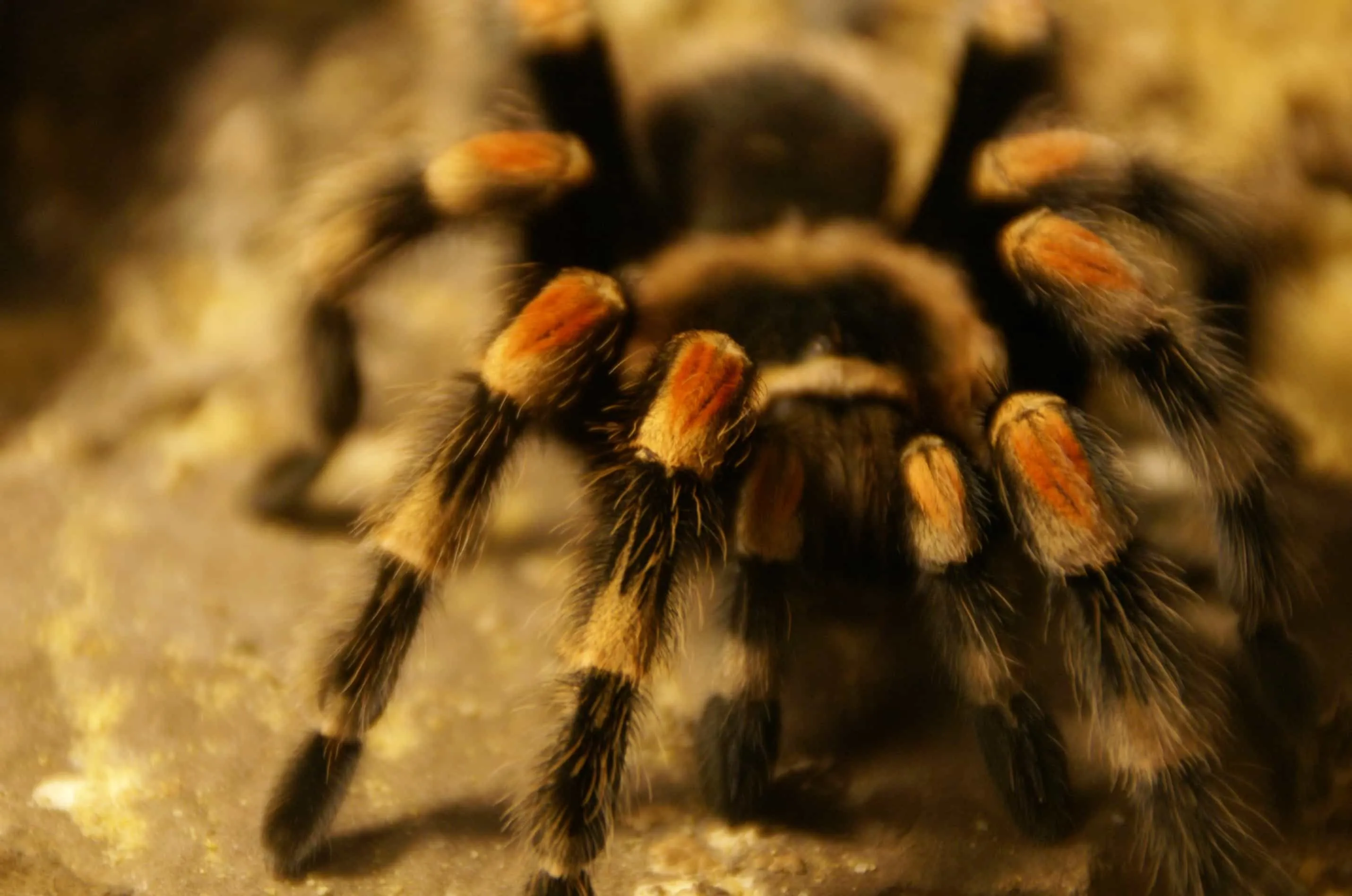
The feeding frequency depends on the tarantula’s age. Spiderlings should be fed every other day, while juveniles can be fed twice a week. Adult Red Knees can be fed once or twice a week. Adjust the feeding schedule based on your tarantula’s body condition; a plump abdomen indicates a well-fed tarantula. Remove any uneaten insects within 24 hours to prevent stress and mold growth. Overfeeding can also lead to health issues.
Providing Water
Always provide fresh, clean water. A shallow water dish is essential. Use a water dish that is shallow enough to prevent drowning. A bottle cap can be a good option for smaller tarantulas. Change the water regularly (every 1-2 days) to prevent bacteria growth. Make sure the water dish is accessible and placed in a stable location within the enclosure, where it won’t easily tip over.
Handling Your Red Knee Tarantula
While Red Knees are known for their docile temperament, handling them should be approached with caution. They are not typically aggressive, but they can bite if they feel threatened. Handling is more stressful for the tarantula than it is beneficial for the owner. Understanding when handling is appropriate and employing the right techniques is critical for the tarantula’s safety and your own.
When to Handle and When to Avoid
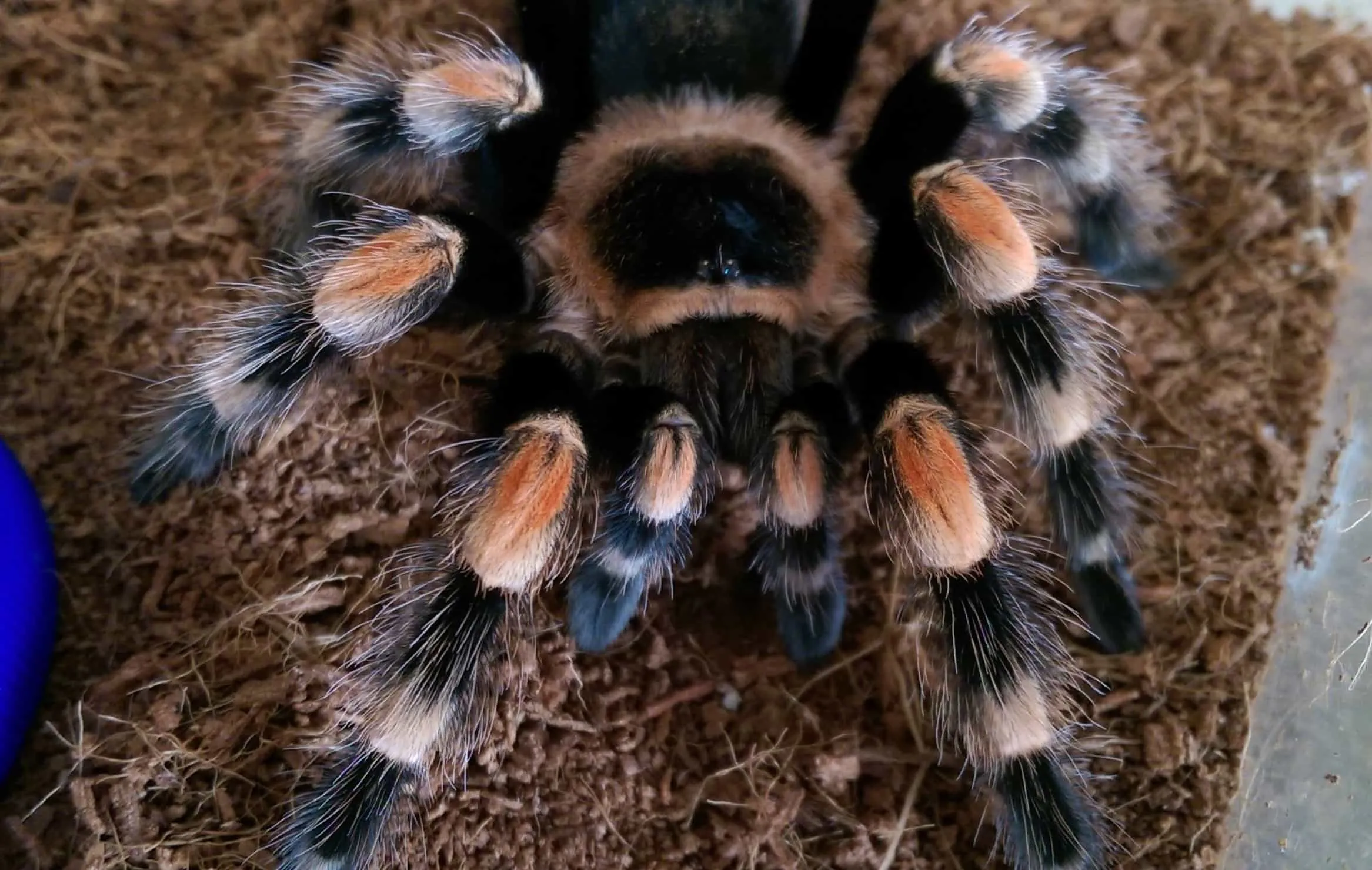
It’s generally best to avoid handling Red Knees unless necessary, such as when moving them for enclosure maintenance or health checks. Avoid handling during molting, as they are highly vulnerable. Don’t handle them immediately after feeding, as they may be more defensive. Avoid handling if the tarantula shows defensive behaviors, like raising its front legs. Always prioritize the tarantula’s well-being and avoid handling unless necessary.
Safe Handling Techniques
If you must handle a Red Knee, do so slowly and gently. Approach from the side, not from above. Use a soft paintbrush to gently encourage the tarantula to walk onto your hand. Avoid sudden movements. Keep your hand close to the surface of the enclosure in case the tarantula falls. Never squeeze or apply pressure to the tarantula’s body. Always wash your hands thoroughly before and after handling to prevent transferring oils or other substances.
Understanding Molting
Molting is a natural process where tarantulas shed their exoskeleton to grow. This process can be stressful, so understanding how it works and how to care for your tarantula during this time is crucial. The frequency of molting depends on the tarantula’s age and growth rate. Spiderlings molt more frequently than adults. Molting is a sign of a healthy and growing tarantula.
Recognizing the Molting Process
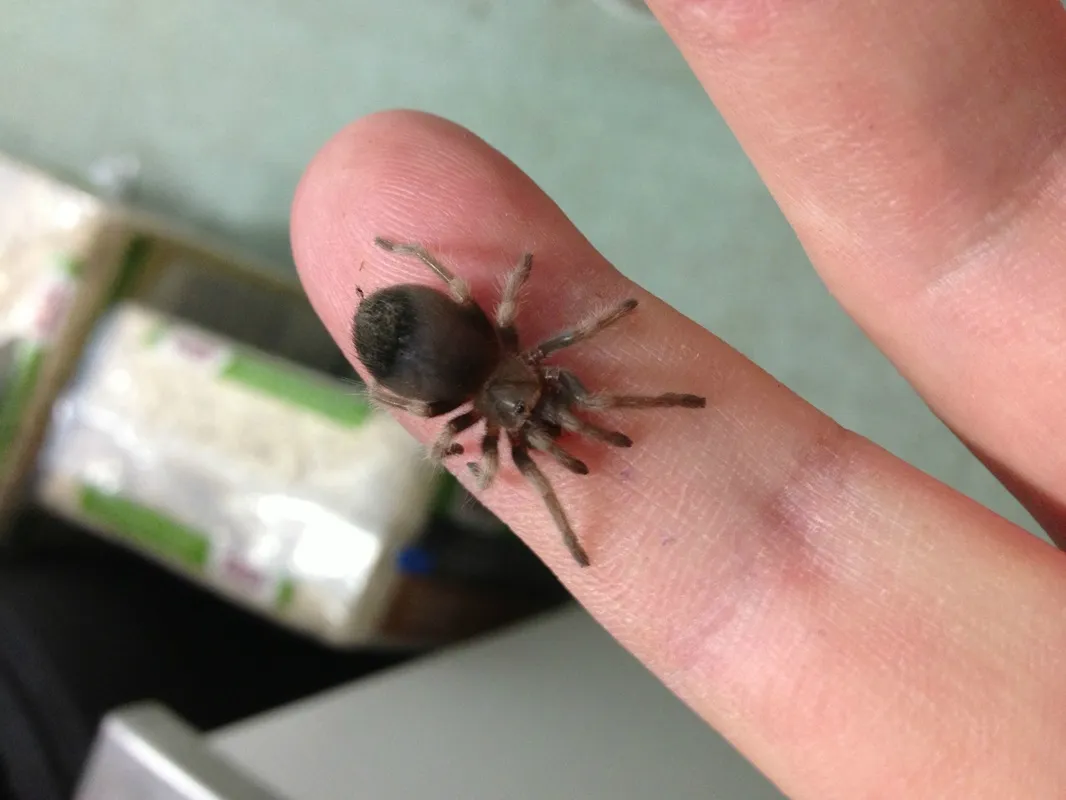
Before molting, a Red Knee Tarantula will typically stop eating and become less active. They may spend more time in their hide. The abdomen will appear darker and more swollen. You may also notice the formation of a new exoskeleton beneath the old one. They usually flip onto their back during the molting process. Do not disturb your tarantula during this time; molting can take several hours or even days.
Caring for Your Tarantula During Molt
Provide a stable and undisturbed environment. Increase the humidity slightly to help the tarantula shed its old exoskeleton. Do not feed your tarantula until its fangs have hardened, usually a week or two after the molt. Once the fangs are hardened, you can offer food, but be aware the tarantula may not be ready to eat immediately. Ensure the enclosure is free of hazards that could harm the tarantula during or after the molt.
Common Health Issues & Prevention
Like any pet, Red Knee Tarantulas can experience health issues. Recognizing the signs of illness and taking preventative measures are critical for maintaining your tarantula’s well-being. Most health problems can be avoided with good care and proper husbandry. Be vigilant and monitor your tarantula’s behavior, appearance, and feeding habits.
Signs of Illness
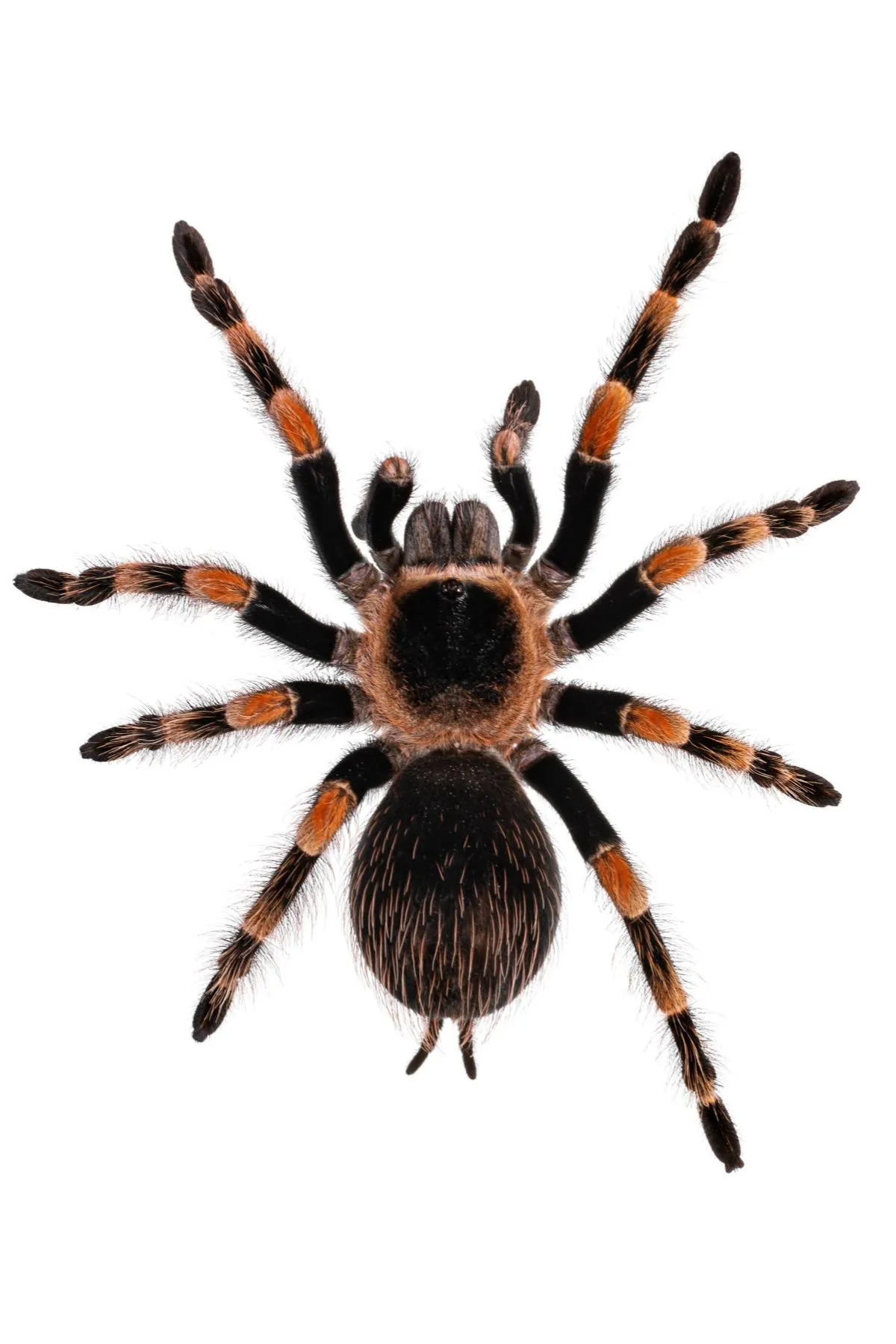
Signs of illness include loss of appetite, lethargy, lack of coordination, and unusual postures. Watch out for mites, which look like small moving dots on the tarantula’s body. A wrinkled abdomen, loss of leg coordination, or the inability to right itself are also signs of possible health issues. If you observe any of these signs, isolate the tarantula and consult with a veterinarian experienced in treating exotic animals or research online for advice.
Preventative Care Tips
Maintain a clean and properly humidified environment. Provide a balanced diet. Regularly remove uneaten food and waste to prevent bacterial growth. Avoid overfeeding, which can cause health problems. Quarantine new tarantulas before introducing them to an existing collection to prevent the spread of diseases. Ensure the enclosure is free of any sharp objects or hazards. Handle the tarantula carefully. Monitor your tarantula’s health on a regular basis, and be prepared to seek professional help if needed.
Breeding Red Knee Tarantulas
Breeding Red Knee Tarantulas is a rewarding but complex process. It requires experience, dedication, and proper knowledge. Breeding them is not for beginners and requires careful preparation and attention to detail. It is essential to understand the species’ specific needs and potential risks. This section provides a brief overview. For complete breeding information, refer to experienced breeders.
Identifying Sex
Determining the sex of your Red Knee Tarantula is the first step in breeding. The easiest method is to examine the molt. After a molt, the presence of spermathecae (sperm storage organs) indicates a female. Males have a modified first pair of legs (pedipalps) used for mating, which are often enlarged and have hooks. Inspecting the underside of the abdomen can also reveal the presence of a spermathacae in females, if they are large enough.
Mating and Egg Sac Care
The process of mating involves introducing a mature male to a mature female. It is essential to supervise this process carefully, as females may sometimes attack and eat males. If successful, the female will produce an egg sac. It is important to provide the correct environment, temperature and humidity. The egg sac will need to be moved to a secure enclosure. The female will protect her eggs. The spiderlings, which will emerge, require special care. Raising them is a considerable commitment.
In conclusion, caring for a Red Knee Tarantula is a fulfilling experience. By following this guide, you can provide your tarantula with the best possible care. Remember to always prioritize the tarantula’s health, safety, and well-being. With proper care, your Red Knee Tarantula can thrive for many years, providing you with a fascinating and rewarding pet ownership experience. Enjoy the journey of caring for this amazing species.
